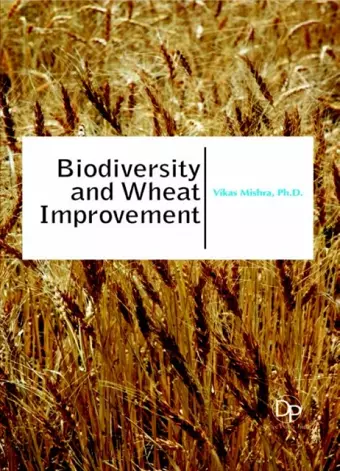Biodiversity and Wheat Improvement
Format:Hardback
Publisher:Delve Publishing
Published:30th Nov '16
Should be back in stock very soon

Globally wheat is one of the most widely produced crop, occupying the land larger and most widely distributed than for any other crop. The cultivation of wheat (Triticum spp.) reaches far back into history. Wheat was one of the first domesticated food crops and for 8 000 years has been the basic staple food of the major civilizations of Europe, West Asia and North Africa. Today, wheat is grown on more land area than any other commercial crop and continues to be the most important food grain source for humans. Its production leads all crops, including rice, maize and potatoes. This widely cultivated and domesticated crop’s biodiversity is complicated by presence of diploid to polyploid chromosomes. The common bread wheat is a hexaploid wheat, with three sets of paired chromosomes as in diploid wheat, which evolved in farmers’ fields by hybridization of domesticated emmer or durum wheat with wild diploid grass (Aegilops tauschii). This also makes conservation of crop diversity critical as it is absolutely pertinent for ensuring food security, adapting to climate changes, reducing poverty and ensuring sustainable agriculture.
This book deals with the conservation, evaluation and utilization of wheat biodiversity for improvement of wheat varieties. Worldwide, more land is used to grow wheat than any other crop. It has overtaken rice to become the second most produced cereal after maize. Pre-breeding supports the development of new varieties of wheat, and will have a major impact in addressing elements of the global challenge of food security. In its 8 000-year history, wheat continues to be the major food grain crop consumed by humans. World wheat production, now averaging nearly 600 million tonnes annually, is currently maintaining pace with population growth. Production gain for the last half century has been about 1 percent per year, due to the technological advances of more productive cultivars and adoption of improved cultural practices. Future projection is that the annual gain will need to reach near 2.5 percent by the year 2025 to keep abreast of population growth. Although land area devoted to wheat worldwide is more than for any other crop, further area expansion is limited. The majority of wheat is produced in the temperate climates of the world. Some area increase has occurred in recent years...
ISBN: 9781680957693
Dimensions: unknown
Weight: unknown
236 pages